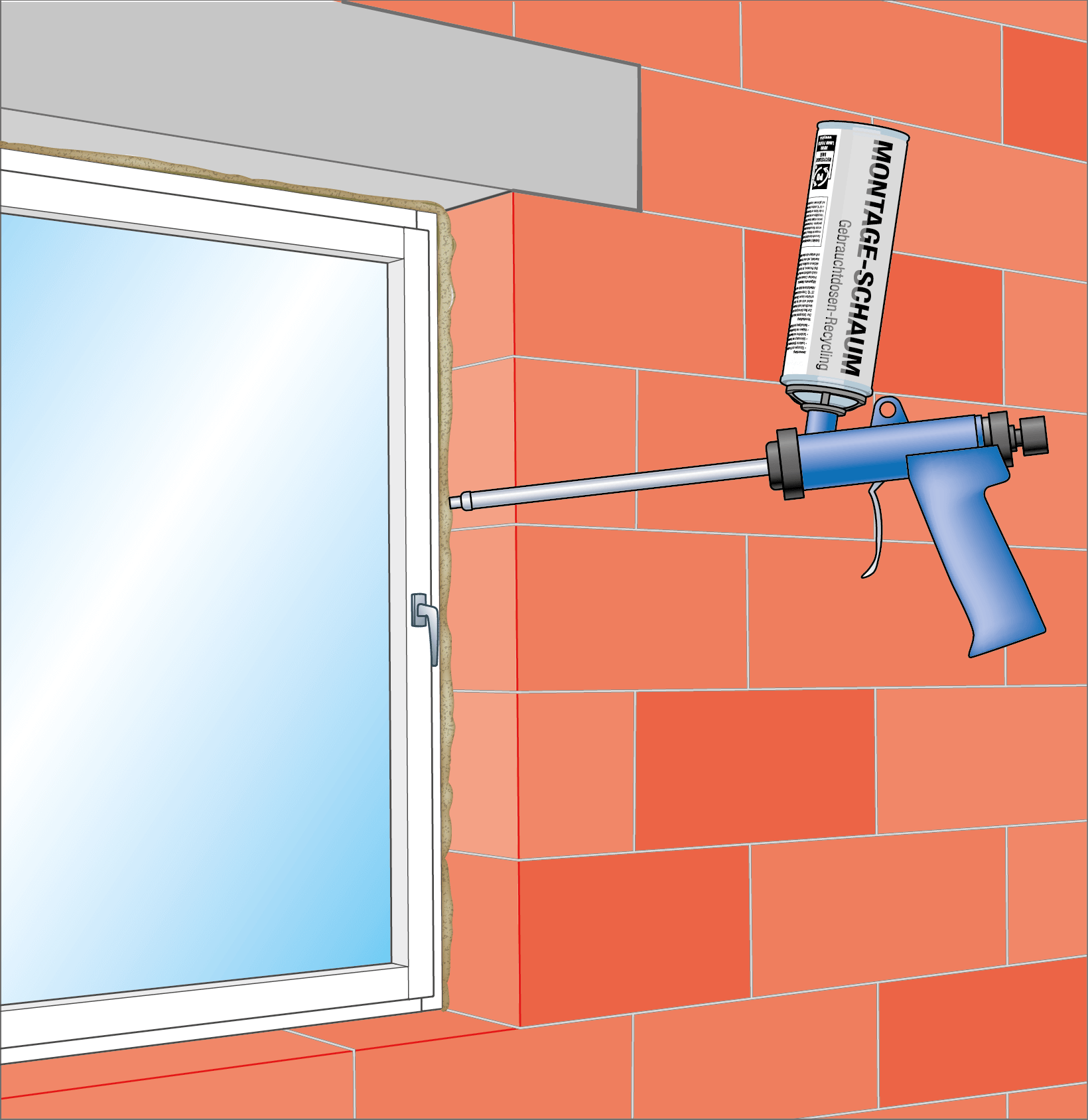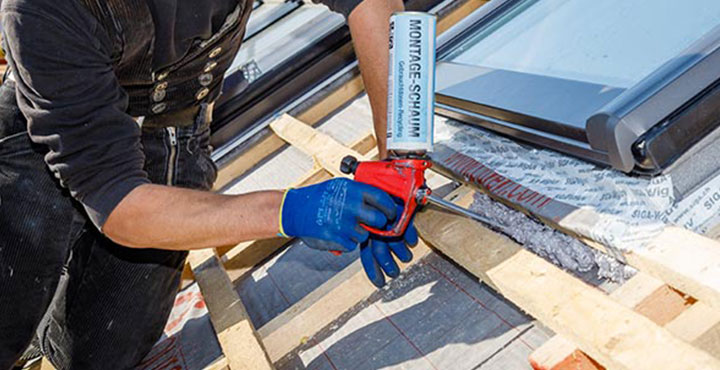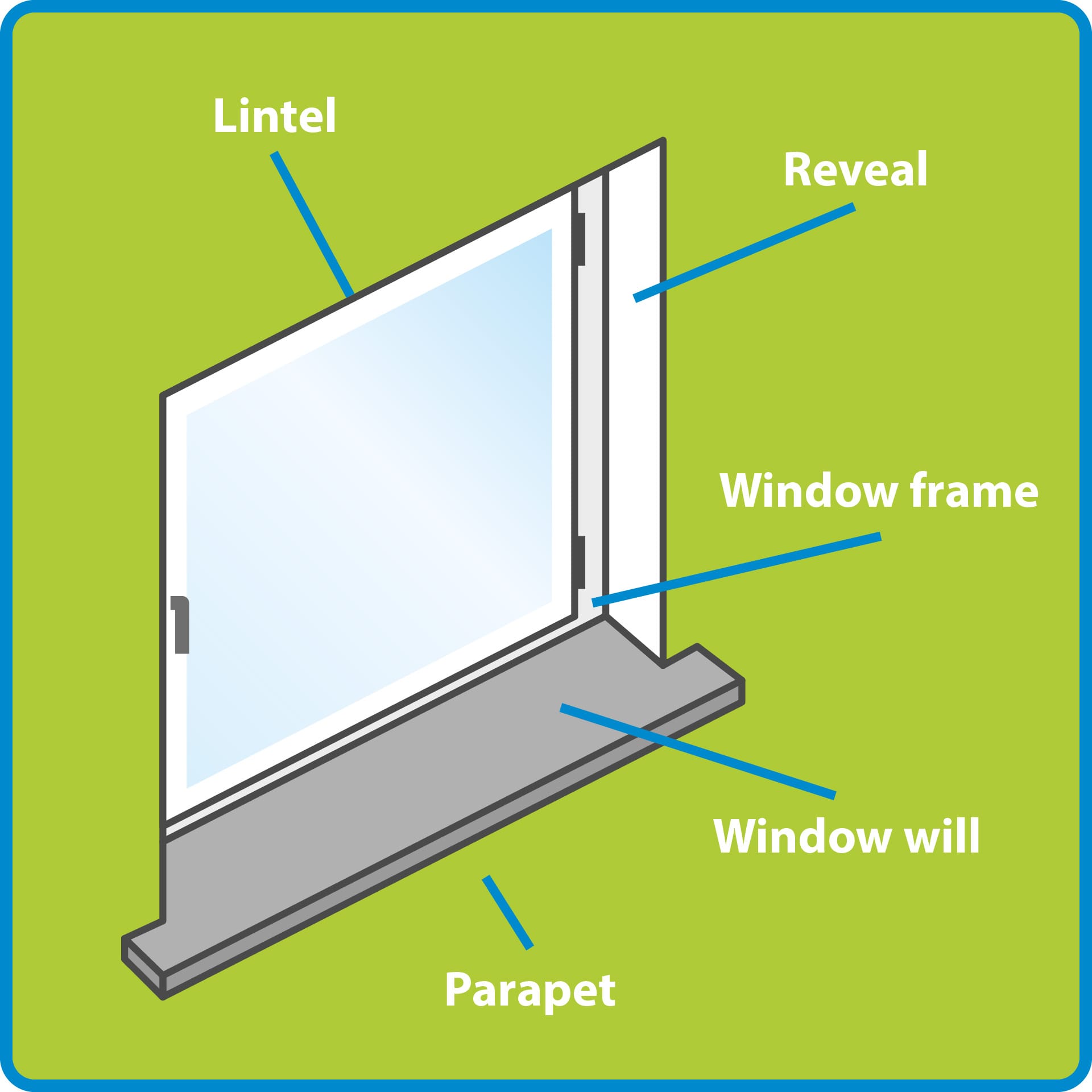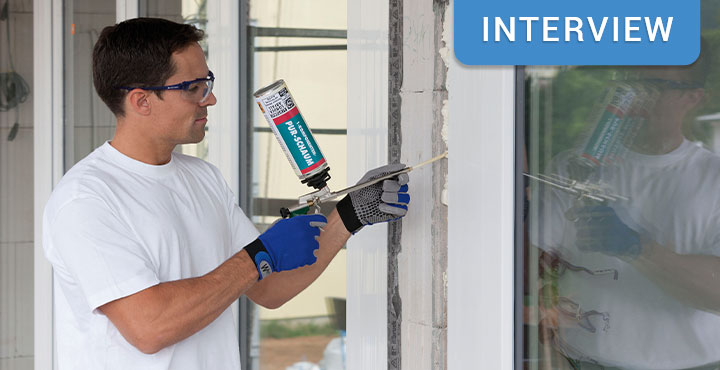
Installing windows with PU foam
Around 80 % of all windows in Germany are insulated with construction foam. And this is despite the fact that the bible of window installers - the RAL installation guide - describes four other methods for joint insulation. There are four good reasons for this high percentage:

1. It provides the best insulation.
A comparison with other insulation materials shows that PU foam has the best thermal insulation values and therefore saves the most energy.
Chart: Comparison of insulating values
2. It is fast.
Trade professionals can insulate window joints with assembly foam two to three times more quickly than with mineral wool.
3. It is safe.
Window foam easily compensates uneven areas in the joint. As PU foam continues to expand after it has been applied, it also reaches difficult-to-access areas reliably. That is why window insulation with PU foam is the ideal choice, especially when the substrate is uneven. When renovating old buildings, for example. The disadvantage of “multifunctional tapes”, which are also suitable for window installation according to RAL, is that they only expand in a certain area. If the joint is too wide in some places, part of the joint will remain uninsulated.
4. Window foam is efficient.
Construction foam forms very good, durable connections between windows/frames and materials such as concrete, masonry, stones, plaster, wood, fibre cement, metal and many plastics. Its high adhesive strength also provides additional stability.
To sum up:
PU foam saves time and costs, and insulates the best. Our website outlines what properties a good window foam must have and what you should be aware of when purchasing foams.
Please note:
Selection of the right PU foam is an important factor for professional window fitting. Window fitting also includes other important steps that cannot be illustrated here. The RAL Window Fitting Guide itself is 300 pages long. For example, you will find more information here: Verband Fenster und Fassade (Assembly guide)
Which construction foam should you choose for window installation?
There are special window foams for window installation. One of their most important features is the flexibility factor, so that the foam can later compensate for movements in the window frame. Find out what a good window foam must be capable of and what you should look out for when buying it on our page on window foam.
What else should you consider when installing windows?

Selection of the right PU foam is an important factor for professional window fitting. Window fitting also includes other important steps that we cannot fully illustrate here. The RAL Window Fitting Guide itself is 347 pages long. You can find more detailed information on this, for example, at the Association of Windows and Façades (guide to installation). So here are just the most important points in brief.
How to fix the window frame
The window frame must be firmly mounted to the wall. Most window frames today have pre-drilled holes in the frame rebate for this purpose. Fixing dowels are inserted through these holes and anchored in the bricks of the window reveal. The window fixed in this way is surrounded by a joint cavity between it and the masonry. This surrounding joint must be closed and insulated with elastic sealing materials.
At what levels is construction foam used?
The joint should be airtight facing the interior of the room and impermeable to driving rain facing the exterior, but at the same time open to vapour diffusion. The latter is important so that water vapour that penetrates the construction can evaporate again on the outside. As a rule, the inside should be better sealed than the outside.
For this purpose, there are usually three sealing or insulation levels for window connection joints. The thermal insulation is provided by PU foam. The craftsman first uses this foam to completely fill the joints. Any protruding edges are cut off as soon as the foam has hardened. A wide range of special sealing tapes, profiles, foils and sprayable sealants are available to make the joint airtight on the inside and rainproof on the outside, but we can’t mention them all here.
Installing windows just with PU foam – is that possible?
Time and again, there are reports stating that windows can be installed and insulated only with the help of PU foam. Other contributions, by contrast, explicitly point out that this is not possible. So which is it? The PU Foam Info Centre asked the German expert for professional window installation, Dipl.-Ing. Wolfgang Jehl from ift Rosenheim.
You should know these terms:

If you want to find out more about window installation, you will always come across a few terms that are not self-explanatory. We have compiled the most important ones for you here.
Window lintel
The lintel is a load-bearing piece of wall above window and door openings. The lintel is stable, spans the entire width and rests with its ends on the masonry next to the opening. It bears the weight of the wall above it and transfers it to the load-bearing areas.
Window reveal
The upper, horizontal end of the wall opening is called the lintel, while the reveals are located on the right and left.
Parapet
The parapet forms the lower end of the wall opening for a window.
Window frame, window case or blind frame
The window frame is the outer part of the window that holds the window sashes. Other names for this include window case and sometimes blind frame. It is attached to the wall using screws.
Window sill
The window sill, also known as the stool or ledge, is the horizontal covering of the upper end of the sill of a window.


![[Translate to Englisch:] Zargenschaum [Translate to Englisch:] Zargenschaum](/fileadmin/PU-Schaum-Center/PU-Schaumarten/img_PU-Schaumarten_Zargenschaum_Innentueren.png)
![[Translate to Englisch:] Fensterschaum [Translate to Englisch:] Fensterschaum](/fileadmin/PU-Schaum-Center/PU-Schaumarten/img_PU-Schaumarten_Fensterschaum.png)
![[Translate to Englisch:] Energie sparen [Translate to Englisch:] Energie sparen](/fileadmin/PU-Schaum-Center/Energie_Nachhaltigkeit/img_energie_sparen.jpg)

